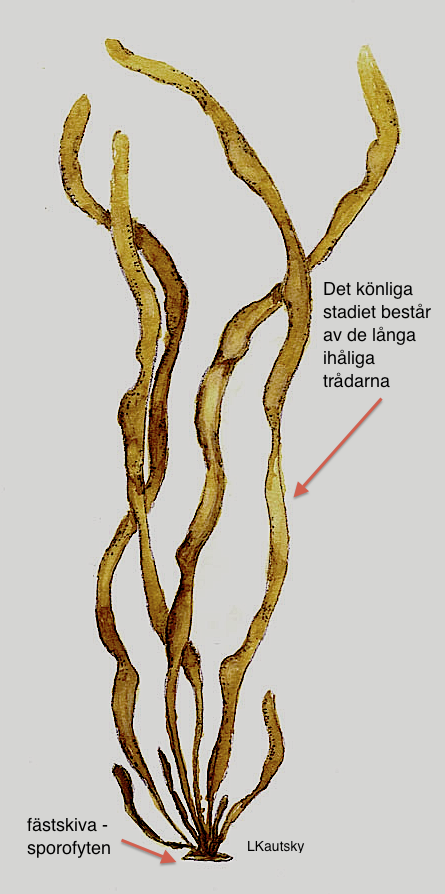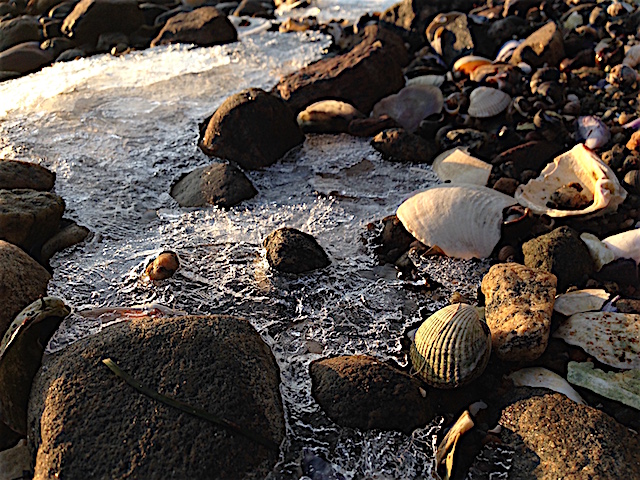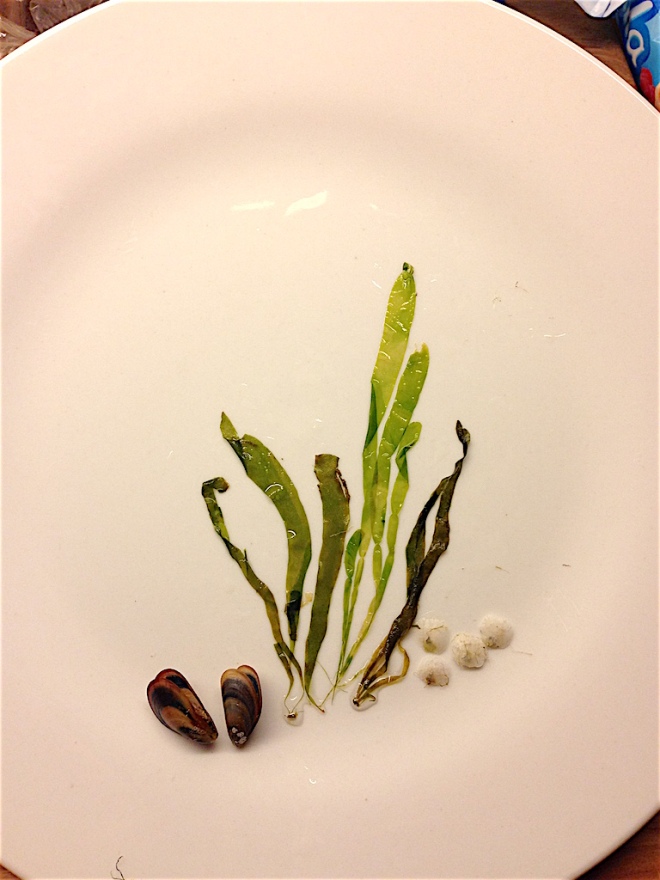For February, our Algae species of the Month will be two closely related species of brown algae, both of which belong to the family Scytosiphonaceae.
The first species is Petalonia fascia, also known by the common names Sea Petals or Broad Leaf Weed. It is a marine species that is not able to live in low brackish salinity, so it does not occur inside the Baltic Sea. It is, however, common along the coast of the North Sea and along the Swedish west coast. I found these specimens all dried up on one of the plastic containers that were sent ashore by the storm Urd, on a beach near the Tjärnö Marine biological station at Stromstad. So, in order to investigate what alga species it was that had settled on the container , I carefully removed the thin brown-green flat membranes that were attached to the plastic with only a tiny attachment-disc. The name Petalonia fascia reveals a lot about how the algae looks. Petal means leaf and fascia means ribbon in Italian.
The other marine species is Scytosiphon lomentaria, known as Leather Tube or Chipolata Weed, and is just as Petalonia fascia a species that you can find during the cold season. It can form a belt just below the surface in the outer archipelago on the Swedish west coast in early spring and early summer. It is becoming more rare in the southern Baltic Sea and northwards from the Danish sound up to the Southern Quark, where the salinity is too low for it to survive. The ribbon-like thalli are yellow-brown and can be up to 25 cm long and 1-2 cm wide. They are hollow and have repeated “laced” narrow parts, making them look like a string of sausages, which gave the species its Swedish name, Sausagestring (Korvsnöre). Scytos means skin in Greek, siphon means pipes or tubes and lomentaria means lacing in Latin. So with a little knowledge of the ancient classical languages , the Latin name will provide you with information on how the algae looks.

Both species have a complex life cycle. It is only the major strands of Scytosiphon lomentaria or leaf-shaped pieces of Petalonia fascia that are visible to the naked eye and are found in early spring to early summer. These are the sexual stage of the algae lifecycle, called gametophyte. They grow from a small, millimeter-sized disc with which the algae is attached to the substrate. These small discs are all that is left for the rest of the year, and they form the second stage of the lifecycle, known as the sporophyte.

It is not possible to tell if the small brown spots or membranes you can see on a rock are sporophytes, which will grow in the spring so that the stone is covered by long sausage strings. Just wait and see. Maybe it’s some completely different species that emerges from all the microscopic stages that overwinter on the rocks and shells in anticipation of the return of light and warmth. And for the ice to melt. However, it is amazing how much freezing and dehydration the species living in the littoral zone can withstand.

To determine what species I found dried-up on the red plastic container from Ireland was easy. I just had to put the dry seaweed in a little water on a plate so it was possible to take a photo. You have to take what you can find in order to get a good background. Once re-hydrated, then it was easy to recognize that it was Petalonia fascia, because this is a species I have found before on the Swedish west coast. Also, I found some blue mussel and small saddle oyster-shells which made for a nice image.



